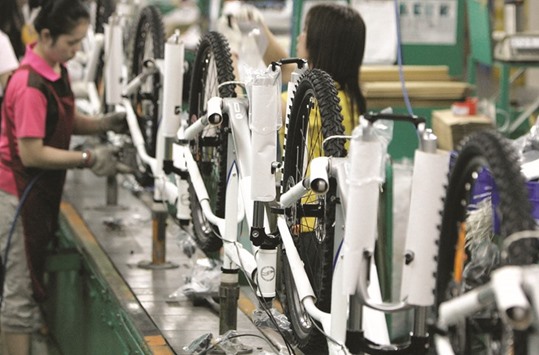Taiwan announced a T$882.4bn ($29bn) stimulus package yesterday to boost its export-driven economy in the face of uncertainty from its two largest trading partners, the United States and China.
Taiwan’s trade-reliant economy is showing signs of recovery, but it is highly vulnerable to protectionist policies from US President Donald Trump and increasing competition from Chinese manufacturers, as well as political tensions with Beijing.
The stimulus plan, which had been well flagged, will be spread over eight years and the infrastructure build-out will target rail, water, green energy and the digital economy, according to the government’s proposal.
Other projects will aim to even out the urban-rural divide.
The plan has the potential to create around 40,000 to 50,000 jobs, the cabinet said.
Just hours after Premier Lin Chuan unveiled the stimulus, which still requires parliamentary approval, Taiwan’s central bank kept its key policy rate steady after its quarterly policy meeting, as widely expected.
The central bank cited signs of an export-led economic recovery and mild inflation for its decision to stand pat.
But it also warned of uncertainties over US policy and risks from large and frequent flows of capital in and out of Taiwan, which it said was affecting its financial markets.
“In order to support the economic recovery, it is necessary to maintain a moderately easy monetary policy. We believe that maintaining an unchanged policy rate will help the overall economic and financial development,” the central bank said in a statement.
Central bank chief Perng Fai-nan, speaking at a news conference after the rate decision, estimated the stimulus would help the economy expand by 2% this year. The cabinets’ view was slightly more rosy, estimating the fresh spending would push growth to 2.1% this year and 2.7% in 2018.
Taiwan’s official statistician has forecast growth this year will rise to 1.92%, a three-year high.
While the spending plan is expected to spur domestic activity, Premier Lin conceded that the economy will still remain reliant on exports and the vagaries of global demand.
“But I must admit that when economic growth is not solid, it’s still necessary to take this action to bolster the economy.
It’s better to do this sooner rather than later,” the premier said at a news conference. Taiwan’s export orders grew at their fastest pace in six-and-a-half years in February on strong global demand for electronics that’s bolstering makers of memory chips, flat panels and smartphones.
But not everyone expects that strength to last.
“China’s slowdown and the slowing down of the tech cycle will start to weigh on exports,” said Shuhui Chia, Asia country risk analyst for BMI Research in Singapore.
“I don’t expect the boost (from exports) to last beyond the first half of the year.”
Analysts also worried about whether the stimulus could be fully implemented.
President Tsai Ing-wen, who took office in May last year, faces re-election in 2020, at the half way mark of the eight-year spending plan.
“We are happy the government is planning to implement this package.
However, its contribution to Taiwan’s GDP would be limited,” said Hsu Kou-an, an analyst at Capital Securities in Taipei.
“It comes down to a question of whether the government will actually persist in implementing the package through the entire eight years, and how much growth it can really generate.”
The spectre of US trade protectionism is also looming large over Taiwan and other Asian exporters.
Taiwan, China and South Korea are all wary of being labelled currency manipulators by the US Treasury under President Donald Trump, whose administration has said it will analyse the currency practices of major trading partners.
One of the vice governors of Taiwan’s central bank has talked to the US Treasury about foreign exchange issues, governor Perng said.
The next US Treasury currency report is in mid-April.
Taiwan’s central bank, wary of a US backlash, has pulled back on its frequent interventions to weaken the local currency.
As a result, the Taiwan dollar has gained nearly 6% against the US dollar so far this year.

People work on the assembly line at the Giant bicycle factory in Taichung. Taiwan’s trade-reliant economy is showing signs of recovery, but it is highly vulnerable to protectionist policies from US President Donald Trump and increasing competition from Chinese manufacturers, as well as political tensions with Beijing.
